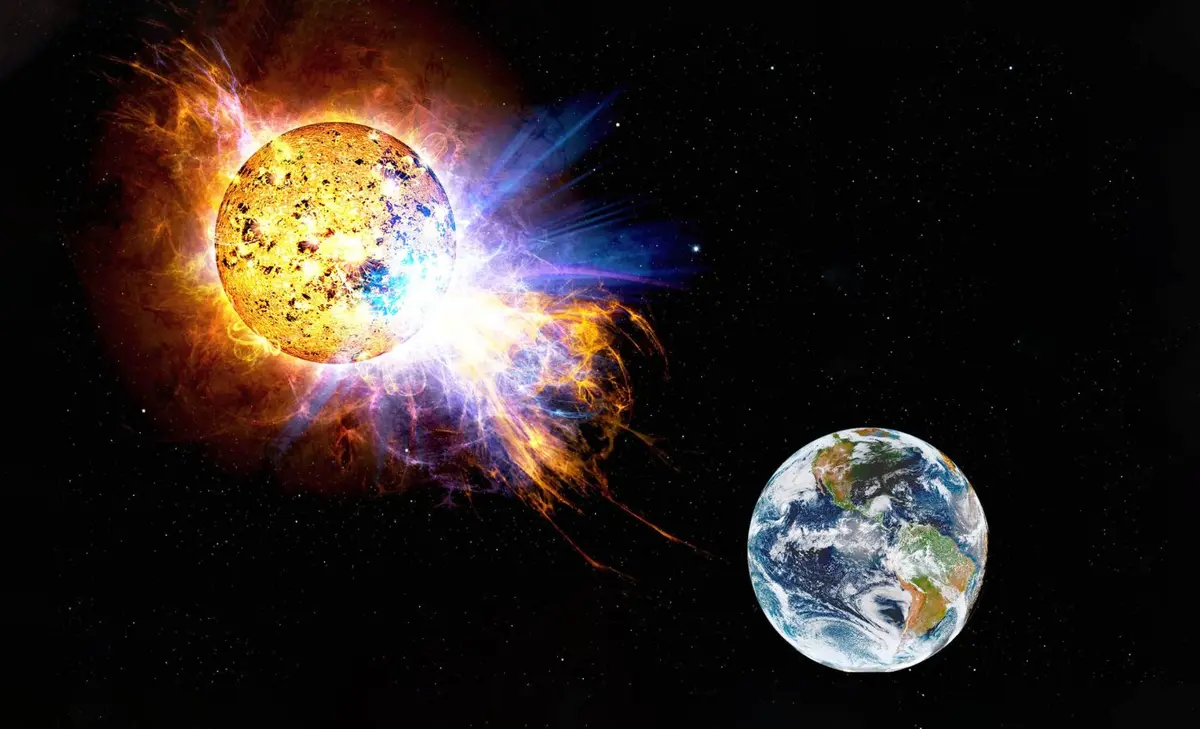The National Oceanic and Atmospheric Administration (NOAA) has issued a warning for a significant geomagnetic solar storm. The event is expected to make landfall on September 12, 2024, and last through September 14, 2024. The storm is classified as a G3 or higher on the NOAA Space Weather Scale, indicating moderate to severe impacts.
Understanding geomagnetic solar storms
A geomagnetic storm occurs when solar activity, such as solar flares or coronal mass ejections (CMEs), disrupts Earth’s magnetic field. These storms are caused by the solar wind, a stream of charged particles released from the Sun’s upper atmosphere. When these particles interact with Earth’s magnetic field, they can cause effects ranging from beautiful auroras to power and communication outages.
Areas and expected impacts
The areas above 50 degrees geomagnetic latitude, which includes parts of Canada, Alaska, and Northern Europe, will be the main areas affected, but depending on the intensity of the storm, impacts may extend further south.
During this event, the following may happen:
- Energy systems : Voltage drops may occur in electrical networks, which may cause possible malfunctions or false alarms. Operators should be on high alert for unusual activity.
- Satellites and spacecraft Satellites in low Earth orbit may experience increased friction and load on their surfaces, potentially causing orientation problems or reduced lifespan.
- GPS and navigation systems : Satellite navigation (GPS) may experience intermittent problems such as signal loss or increased positioning errors. This can affect not only personal GPS devices but also aviation and maritime operations.
- Radio communication : High frequency (HF) radio communications can be unreliable, especially in polar regions, and can disrupt aviation, maritime and emergency services that rely on these frequencies.
- Aurora Borealis On a brighter note, a geomagnetic storm could cause spectacular auroras, possibly seen across the southern United States.
Overview of current solar storm activity
Solar activity has been high over the past 24 hours, with a powerful X1.3 solar flare detected in an unnumbered region on the southeastern edge of the Sun. This flare was accompanied by several radio bursts signaling an intense solar storm. Medium-sized (M-class) flares were also reported from other active regions of the Sun.
Solar activity is expected to remain moderate, with a low probability of another strong (X-class) eruption between September 12 and 14.
Energetic particles and the solar wind
The flux of high-energy electrons (greater than 2 MeV) remains moderate, while the flux of protons tends to be normal. However, there is a small possibility that the increase in the proton flux will reach a negligible threshold level between September 12-14.
The latest data show that two coronal mass ejections (CMEs) reached Earth on September 8 and 10. The first shock was detected at around 2:54 a.m. UTC and caused the solar wind to increase in speed from about 350 km/s to over 520 km/s. This increase may lead to long-term geomagnetic disturbances.
Increasing solar wind conditions are expected to continue through September 13, with additional strengthening expected around September 14 due to another CME from September 11.
What to expect in the coming days?
- Geomagnetic solar storm conditions: The geomagnetic field is currently oscillating between quiescent and active levels. However, moderate geomagnetic storms (level G2) have already been recorded and may intensify.
- Storm forecastConditions are expected to remain unstable or stormy through September 13, 2024; a new period of increased activity is possible on September 14 due to the arrival of the last CME.
Be prepared during a solar storm
Geomagnetic storms can affect a variety of industries, including aviation, navigation, satellite operations, and energy systems. Here are some ways to prepare:
- For energy companies: Closely monitor systems for power outages and ensure backup systems are ready.
- For satellite operators: Be prepared for increased drag of low Earth orbit satellites and the potential impact of surface loading.
- For travelers and emergency services: Be aware of possible GPS errors and HF radio communication problems.
- For the public: Enjoy the aurora borealis if you are in an area where they are visible, but also stay tuned to local news or weather channels for updates on possible outages.
Follow Earth.com and NOAA’s Space Weather Prediction Center for real-time updates and alerts on current space weather conditions.
Source: Port Altele
